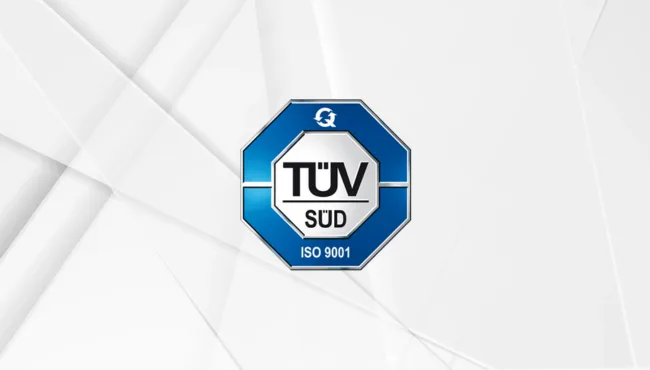
The pharmaceutical industry has no shortage of AI ambitions. Between now and 2030, AI investments are expected to skyrocket from $4B to $25B. Most of that spending is heading toward well-publicized Gen AI applications like drug discovery, clinical trial optimization, and automating back-office workflows.
But another opportunity is quietly coming into view: commercial intelligence. While not as flashy as molecule generation or synthetic trial data, AI-powered commercial intelligence may soon become one of the most valuable levers for competitive advantage in pharma.
Learn how AI is helping pharma companies see around corners, turning market noise into actionable intelligence, fine-tuning pricing and access strategies, and giving commercial teams a sharper competitive edge.
Why Commercial Intelligence Remains an Uphill Battle For Pharma Companies
The pharmaceutical industry is under mounting pressure to deliver value-based medicines — faster, cheaper, and more tailored to patient needs. But R&D costs remain steep: developing a new drug runs anywhere between $314 million and $2.8 billion.
At the same time, asset life cycles are compressing, forcing companies to recover investments faster. When blockbuster patents expire, the stakes are brutal. Originator companies can lose up to 80–90% of their market share to generics in a matter of months. And that’s already happening to industry giants like Merck, J&J, and Bristol Myers Squibb, among others.
To improve their odds, pharma companies traditionally rely on commercial intelligence (CI) — tracking competitor moves, analyzing market access trends, and decoding payer behavior across fragmented data sets. Yet, the CI process has always been very labor-intensive and fragmented. And the sheer volume and velocity of big data in healthcare are also outpacing the capabilities of traditional BI tools.
Commercial intelligence in pharma is getting harder to mine effectively due to several persistent challenges:
- Siloed internal data. Pharma companies generate a firehose of data — clinical trials, market research, patient records, competitive monitoring. But much of it remains siloed in disconnected systems. This fragmentation leads to inefficiencies, duplicated efforts, and missed opportunities.
- Gaps in patient intelligence. Precision medicine demands nuanced insights — from patient segmentation to biomarker data. Yet many organizations struggle to access this level of detail, limiting trial design and therapy targeting.
- Inconsistent market intelligence. CI teams often face contradictions in competitor intelligence due to disparate sources, outdated information, and inconsistent reporting standards across regions. Many insights remain reactive rather than predictive.
Subsequently, pharma companies get blindsided. Roche missed out on a now-successful atopic dermatitis therapy by prematurely selling it to Eli Lilly, who went ahead to acquire FDA approval. Merck lost its lead in PARP inhibitors after a strategic acquisition by GSK. J&J is now scrambling to shore up revenue streams as Stelara, which generated almost $11 billion in 2023, faces biosimilar competition.
In many cases, market flops aren’t just due to R&D missteps. They were missed strategic plays. A recent Deloitte analysis of 25 major pharmaceutical companies found that revenue and stock returns don’t positively correlate with R&D spending.
As more companies are realizing their biggest gap lies in foresight, the question now is: Can AI-powered commercial intelligence close it?
What AI-Powered Commercial Intelligence Can Do for Pharma Companies
Commercial intelligence in pharma used to be a game of playing catch-up: tracking market reports, monitoring regulatory changes, and analyzing competitor moves after the fact. AI changes the equation.
Instead of lagging, commercial teams can now stay ahead — connecting dots in real time across thousands of data points: competitor filings, clinical trial results, pricing signals, prescriber sentiment, and more. Large language models (LLMs) can now analyze thousands of unstructured data points and summarize key threats or opportunities in seconds. Retrieval-Augmented Generation (RAG) architectures go further, grounding outputs in a curated knowledge base to ensure factual accuracy and topical relevance.
Unlike legacy BI tools, which surface historical correlations, AI-powered commercial intelligence can predict market shifts, simulate pricing scenarios, and personalize outreach to providers or payers. It gives commercial teams a dynamic, always-on engine for strategic insight, not just a static dashboard. And in an industry where the competitive landscape shifts overnight and drug lifecycles are shrinking fast, this is a game-changer.
Advantages of Using AI for Commercial Intelligence
- Faster time-to-insight. Automates data gathering and synthesis, turning weeks of manual analysis into minutes.
- Always-on market monitoring. Continuously scans and summarizes real-time changes in payer policies, competitor strategies, and prescriber sentiment.
- Deeper competitive intelligence. Extracts key themes and shifts from unstructured data sources — analyst calls, social media, earnings reports — at scale.
- Smarter pricing & access strategy. Simulates pricing scenarios, forecasts reimbursement outcomes, and adapts to evolving payer expectations.
- Personalized sales enablement. Generates tailored HCP engagement strategies and sales materials based on behavior, preferences, and regional nuances.
- Greater forecast accuracy. Integrates multiple variables — from disease prevalence to market dynamics — to sharpen demand forecasting and launch planning.
- Efficient compliance tracking. Monitors regulatory changes and ensures that commercial strategies remain aligned with local and global compliance requirements.
Emerging AI Use Cases for Commercial Intelligence in Pharma
AI-powered commercial intelligence is a newer BI and data analytics trend on the block, but leading pharma companies are already tapping into its potential.
The following use cases show how AI is helping commercial teams go beyond static market analysis and start operating with real-time agility — a critical advantage in today’s high-stakes pharma landscape.
Adaptive Market Sensing
In a volatile pharma market, slow signal detection can mean lost market share or missed opportunities altogether. AI-powered adaptive market sensing helps commercial teams shift from retrospective analysis to real-time market awareness. Think of it as a Bloomberg terminal for your competitors, payers, and prescribers.
LLMs and RAG-based systems can scan thousands of unstructured data sources — earnings calls, clinical trial updates, HTA decisions, policy changes — and surface meaningful trends as they happen. CI teams can detect early signals of competitor pipeline shifts, pricing adjustments, payer behavior changes, and new prescriber patterns long before they appear in traditional market reports.
For instance, Pfizer, together with CytoReason, developed an adaptable AI model of the immune system, which now informs both R&D and commercial strategies by predicting market needs and optimizing resource allocation.
Novartis, in turn, deployed a Gen AI assistant with Dataiku LLM Mesh. The company previously relied on manual processes to analyze hundreds of long HCP interview transcripts — a bottleneck that slowed insights and limited agility. With a new GenAI-powered chatbot, Novartis transformed this process into an on-demand, conversational experience for commercial teams.
The results were striking: data ingestion time was reduced by 600% (from one week to six hours), and time-to-insights on key GenAI use cases dropped by 90% (from 21 days to two). Automated dashboards, real-time data refreshes, and intuitive visualizations have since empowered faster, smarter decisions across marketing, sales, and CRM functions, helping Novartis keep pace with an increasingly dynamic healthcare market.
Pricing Strategy Optimization
In the realm of value-based healthcare and increasingly complex reimbursement schemes, pricing strategy has to be flexible too. AI is giving pharma companies new tools to model, test, and refine pricing strategies in ways that were previously impossible.
By simulating reimbursement and pricing scenarios, AI models can evaluate how different contract structures, market dynamics, and payer behaviors will impact profitability and market access. Real-world data on patient populations and outcomes can be combined with clinical trial results to inform smarter, more adaptive pricing models. AI can also assist in generating optimized rebate agreements and contract terms, turning pricing committee negotiations into a more science-driven process.
Pricing use cases alone account for 4–9% of AI’s potential value in pharma through 2030.
PwC
Several AI-driven pricing innovations are already delivering real-world impacts:
- Real-time pricing algorithms adjust prices based on market demand, competitor moves, and product differentiation. Okra Technologies’ ValueScope platform predicts HTA outcomes with over 90% accuracy, helping optimize pricing for new drug launches.
- Segmented pricing strategies draw on advanced analytics to understand willingness to pay across different market segments. Glass Box Analytics has developed a new drug pricing method called Predictive Acquisition Cost (PAC), which provides predictive acquisition price estimates using multiple data sources.
- Tender bidding optimization is helping companies compete more effectively in price-sensitive markets. Vamstar built a pharma Pricing Co-Pilot that recently helped an international pharma player optimize tender bids in Italy, delivering an additional $1.5 million in revenue, a 76% win rate improvement, and a 32% margin increase.
As pricing pressures intensify, AI-driven optimization will be a key lever for maintaining market access, maximizing margins, and responding to payer demands in real time.
Competitor Analysis at Scale
Understanding what your competitors are doing — and where they’re going next — is critical for preventing revenue erosion. AI tools can scan and analyze mountains of unstructured data — 10-K filings, press releases, earnings calls, patents, conference presentations — and surface actionable insights in near real time.
Commercial teams no longer have to rely on fragmented, manual monitoring. They can detect early signals of competitive threats and opportunities before they become public knowledge.
AI-powered competitor analysis tools in pharma can track:
- Shifts in competitor pipelines based on publication patterns and trial activity
- Emerging scientific trends likely to influence therapeutic strategies
- Signals from adjacent therapeutic areas that could reshape market dynamics
- Patterns in regulatory interactions that hint at approval timelines
- Market entry forecasts based on integrated development, regulatory, and commercial data
For instance, Theramex used advanced AI search technology from AlphaSense to plan its go-to-market strategy for women’s healthcare products in Mexico. The advanced market research and alert features allowed the CI team to stay ahead of industry developments, competitor activity, and emerging trends, enabling faster, more confident decisions.
Confity is another platform with stellar AI competitor research capabilities. A pharma company configured the platform to monitor competitors’ rare disease portfolio developments (Alagille Syndrome, NASH/NAFLD, Angelman Syndrome, Acromegaly, and C3 Glomerulopathy). The platform automatically scans public data sources and supplies CI teams and executives with curated Newsfeeds, featuring the latest updates. All the sourced data is also available for deeper analysis through customized dashboards.
HCP and Patient Engagement
Commercial success in pharma hinges on building strong relationships with healthcare providers (HCPs) and their patients. AI is helping pharma companies take both sides of that equation to a new level: Adapt engagement tactics, improve trial outreach, and even support personalized treatments.
On the HCP side, conversational AI tools enable faster and hyper-personalized outreach. LLMs can analyze HCP publications, social media activity, prescribing patterns, and previous interactions to refine outreach and content, ensuring providers get the information they care about when they need it. Some systems can even identify physicians actively researching a disease area and proactively deliver updates on relevant therapies.
For patients, AI is driving more personalized support and more inclusive clinical trials. Johnson & Johnson uses AI and machine learning to analyze large, de-identified datasets and identify clinical research sites likely to enroll diverse, eligible patients. This helps bring trials to more patients, not just waiting for patients to sign on, plus makes clinical trials more inclusive. Advanced analytics can now pinpoint locations and healthcare institutions where diverse patient populations are more likely to be treated, enabling researchers to prioritize those sites for recruitment.
Onwards, J&J also uses AI to develop more personalized treatments. The company is working on an AI-powered biomarker test for bladder cancer treatments. It’s designed to detect FGFR gene alterations in patients’ tumours, so that they could receive more targeted, personalized treatment.
AI is also enabling new forms of digital patient engagement beyond clinical trials. Conversational AI tools are also being used to deliver personalized education, answer patient questions, and offer ongoing support between clinic visits for chronic disease management. These tools help improve medication adherence, drive better health outcomes, and foster stronger patient-provider relationships.
Regulatory Landscape Tracking
Pharma companies operate in one of the most complex and tightly regulated industries in the world, and the regulatory landscape is constantly shifting. From updated FDA and EMA guidance to new global data privacy rules, keeping commercial strategies compliant is an ever-moving target. AI can help companies stay ahead of these changes and turn regulatory complexity into a more manageable part of their operations.
Large language models and GenAI tools can monitor vast streams of regulatory updates — parsing emerging guidance from global agencies — and summarize the potential impacts on development, marketing, and market access strategies.
Pfizer is exploring how AI can streamline regulatory compliance and accelerate approval timelines — two historically slow and resource-heavy processes in pharma. The company developed a machine learning model to anticipate regulators’ likely questions about new drug applications and proactively prepare responses to save time during the submission process.
In parallel, Pfizer teams also leverage AI to automate regulatory document generation — a traditionally manual task that spans thousands of pages of reports, tables, and narratives. By using AI to pre-fill and validate these documents, the company hopes to significantly reduce the time and operational cost of getting new therapies to market.
Novartis has also taken a major step forward in automating compliance monitoring with its AE Brain initiative. The system relies on an ensemble of advanced natural language processing models (including BERT, BioBERT) and character-based models to scan unstructured data for mentions of potential adverse events.
Critically, the system is designed with a human-in-the-loop approach and fully reproducible retraining, ensuring it meets strict GxP compliance standards. By automating this labor-intensive process, Novartis not only reduces compliance risk and resource demands but also frees up its pharmacovigilance teams to focus on more strategic tasks.
Conclusion
In an industry where asset life cycles are shrinking, competition is intensifying, and market signals are increasingly fragmented, companies need sharper foresight. With AI, commercial teams can move beyond static dashboards and slow-moving analyses to something far more dynamic: real-time market sensing, predictive intelligence, and smarter strategic execution.
Edvantis has successfully helped pharma companies turn fragmented data into actionable intelligence. Our teams have supported clients in overcoming drug adoption barriers by integrating and analyzing insights from across siloed systems. We also bring deep expertise in processing next-generation sequencing (NGS) data, enabling more precise identification of multigenic disease drivers and therapy resistance factors. Whether you’re building your first AI solution or seeking to scale an existing system, we can help you bring your vision to life. Contact us for more information about our AI software development services.






